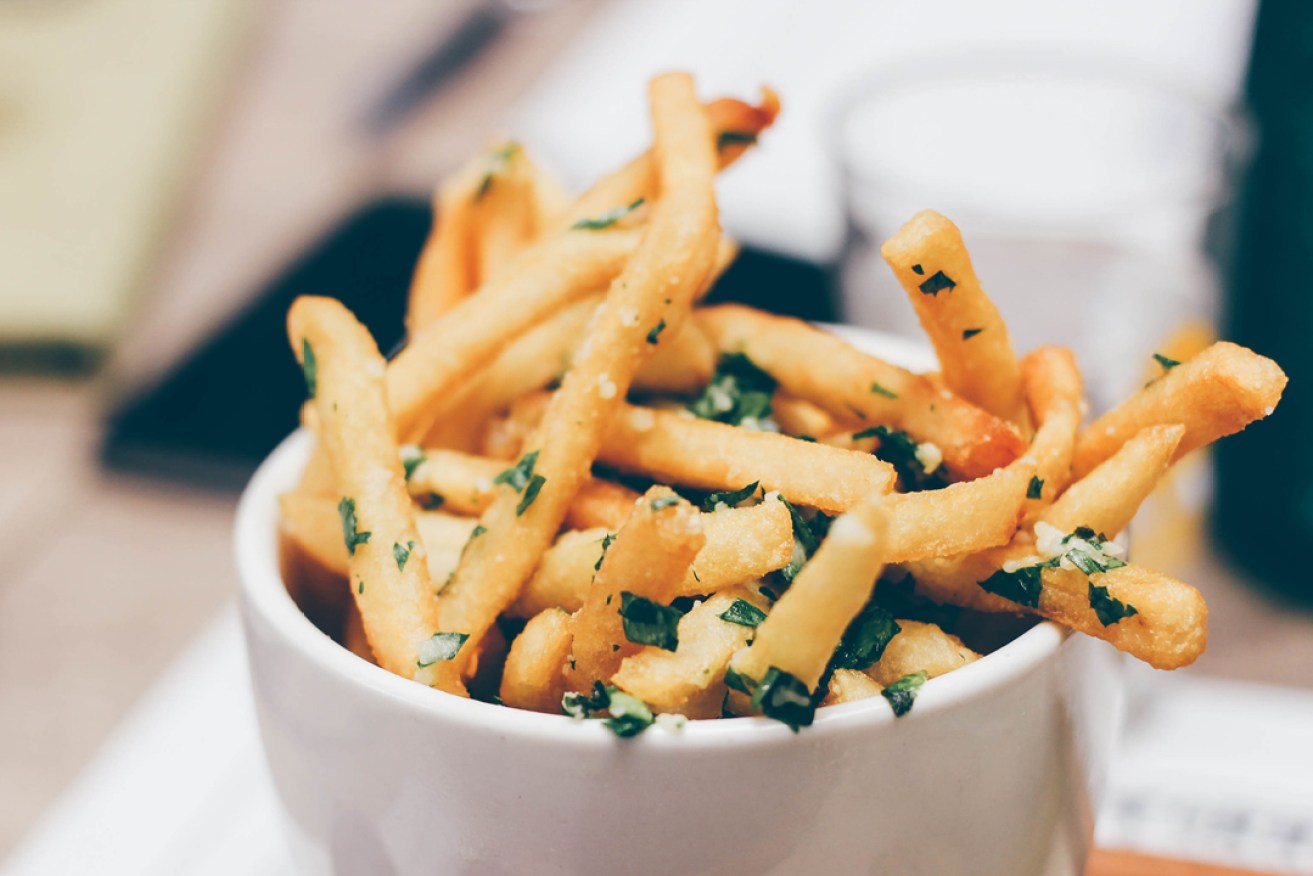The science of taste – or why you choose fries over broccoli
Sugar, salt and fat make food more appealing to most people’s tastebuds, but research shows that the way you chew and genetic variations can also affect how you perceive flavour.

Most people say that if there is a healthy choice on a menu they will take it. But observations and research show this is generally not the case.
Instead, people tend to make choices based on how food tastes. Typically, the more sugar, salt and fat in the food, the more we will like it. Genetics, experience and environment also influence our perception of food and the consumption choices we make.
Australians are still not eating as healthily as they should, despite years of programs and publicity warning of the health impacts of poor diets.
But what if we could make healthier foods taste better and thus improve eating patterns?
To examine questions of food taste, flavour and digestion under controlled conditions, the CSIRO (Commonwealth Scientific and Industrial Research Organisation) has developed a computational model of food mastication (chewing) and digestion.
We have also developed a kit to map genes that predict flavour preferences, and are measuring how proteins in saliva affect food flavour.
A model to chew on
A less messy way to watch food being chewed – a computerised model.
How a person chews their food, mixes it with saliva and squeezes it with their tongue has a large impact on how it tastes. But eating is a complex process and is different for every person, and until recently was very difficult to measure and monitor.
Our model can simulate eating behaviour based on data from real people eating different foods. It shows how food products break down in the mouth and how components such as sugar and salt are transported to our taste receptors.
We are also modelling how food gets broken down in the stomach and what happens to it as it moves through the digestive tract.
This will help in the future development of food matched to an individual’s physiology, which can deliver nutrients at the ideal location and control the rate of digestion.
Measuring genetic variation in taste
It’s now clear that variation in genes influences whether people will like certain foods, and how much they will eat.
For example, the presence or absence of a particular form of a gene involved in smell determines whether an individual is sensitive to androstenone, a molecule that generates the unpleasant flavour found in pork from male pigs. Individuals with a variant of this particular gene can detect androstenone by sniffing pork. Androstenone sensitivity is reported to be much higher in Asian populations than in those of European descent.
Other genes are involved in determining preference or avoidance of bitter flavours. For example, a compound known as PROP (6-n-propylthiouracil) is commonly found in green vegetables such as broccoli, and contributes to creating a bitter taste. People who have the gene for a bitter receptor known as TAS2R38 are able to taste the compound, either mildly or very strongly. Those without the gene for this receptor are unable to taste it. This explains why some people like their greens more than others.
The CSIRO is developing a genetic kit with the goal of predicting whether or not individuals will like particular foods.
Working with people in their own homes, we have tested and validated a “PROP kit” for detecting and rating bitterness intensity in food. Our preliminary analysis of DNA collected from test subjects’ saliva and cheek cells showed that those who could taste bitterness had the TAS2R38 bitter receptor, and those that could not taste bitterness did not have this receptor.
The test also allowed us to predict which consumers were bitter tasters and which were non-tasters.
This sort of kit gives us an idea of why some people like their greens more than others. The kit will be further tested and validated in a much larger cohort of Australians of both Asian and European descent.
Saliva can alter the taste of food
Saliva is vital in helping us eat food safely, and it lubricates and transports taste molecules from food to our tastebuds.
Saliva contains an enzyme called amylase, which breaks down starch into sugars. If you’ve ever noticed that some children keep bread in their mouth for a long time, it’s because as the amylase in their saliva acts on the starch, more sugar is produced and the bread tastes sweeter.
There are other enzymes in saliva that act on fat and protein, and control how we perceive food. The composition of saliva in each person is different. It changes throughout the day, and is influenced by what you eat, what exercise you have done, your mood, and even whether it is light or dark outside.
Proteomics (the study of proteins and their function) is an approach that can measure differences in the protein composition of different people’s saliva. The types and level of proteins and enzymes present in saliva vary from person to person, and this changes the way flavour is released from food in our mouth.
The bacteria that live in our mouths, part of our microbiome, also have an influence. For example, bacteria change the flavours of food by increasing the production of molecules that create particular taste experiences. The types of bacteria that are present create a unique response in each individual.
Research into individual food preferences – whether they be as a result of our genetics, saliva or the way we chew – may one day guide food manufacturers to produce healthier options of our everyday foods.
Hopefully this may contribute to consumers making better menu selections and decrease the number of food-related diseases currently affecting Australians.
Ingrid Appelqvist is research group leader and food R&D policy leader at the CSIRO. This article was originally published on The Conversation. Read the original article.




